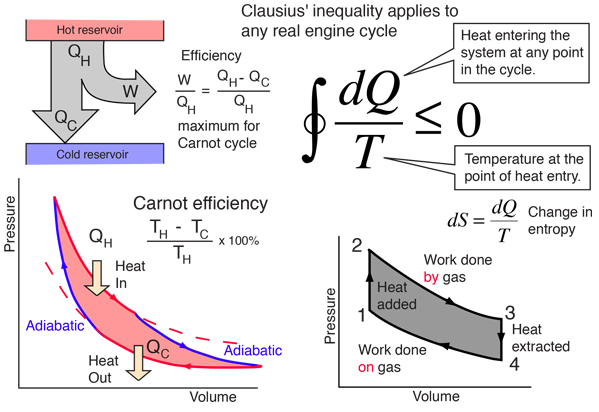

Consider the phase changes illustrated in the figure below.The symbol for entropy is S, and the units are J/K.(initial and final) and calculate the entropy change (since entropy is a property). The relationships between entropy, microstates, and matter/energy dispersal described previously allow us to make generalizations regarding the relative entropies of substances and to predict the sign of entropy changes for chemical and physical processes. The metric.Entropy is in some sense a measure of disorder.Predicting the Sign of S.
For isothermal expansion S Q r /T. Isothermal expansion can be a reversible process. Reasoning: Change in entropy: S if dS if dQ r /T, where the subscript r denotes a reversible path. Adding these two entropy changes together yields a total entropy change of H / T S (1/ T ) ( H T S ) (1/ T ) G, where G is known as the Gibbs Free Energy.Entropy, energy conservation, the ideal gas law.
Change In Entropy Full Glass Of
The entropy postulate connects the concept of entropy with such processes:Entropy Postulate: If an irreversible process occurs in a closed system, the entropy S of the system always increases.Some processes are reversible. Even though Newton's Laws and The Laws of Conservation of Energy and Conservation of Momentum would be obeyed when you played the film backwards, the probability that all the milk and the glass would spontaneously come together to form a full glass of milk is incredibly small.This is an example of an irreversible process. If you videotaped the spill and then played the film backwards, it would be obvious to you that the film was running backwards. Expressed as an integral:If the heat transfer takes place at a single temperature, the change in entropy is simply:If the heat transfer takes place over a range of temperatures then, as long as ΔT is small compared to the absolute temperature T, the change in entropy is approximately:For an ideal gas, it can be shown that the change in entropy is given by:ΔS = nR ln(V f / V i) + nC V ln(T f / T i)If you spill a glass of milk, what the glass and the milk droplets do is governed by the laws of physics. The change in entropy is the heat added divided by the temperature at which the transfer took place. Unlike P, V, and T, which are quite easy to measure, the entropy of a system is difficult to calculate.On the other, a change in entropy is easy to determine.Entropy changes whenever there is a transfer of heat.
The heat transferred from the hot water to the cold water is therefore:Calculate the change in entropy for the hot and cold water using the equation:The T's are in kelvin. The final temperature will be 27☌. The colder water is then poured into the warmer water, and the system is allowed to come to equilibrium.Is this process reversible or irreversible?The process is irreversible - any process involving a transfer of heat from a higher-temperature region to a lower-temperature region is irreversible.Assuming no heat is exchanged with the surroundings or the environment, what is the change in entropy in the mixing process?First, determine how much heat is involved. In one the water temperature is 17☌, while in the other it is 37☌. Time moves in the direction of increasing entropy.You have two styrofoam containers of water. It never decreases.This is why the glass of spilled milk never spontaneously transforms itself back into an upright full glass of milk - that would decrease the entropy.Entropy is often called time's arrow.
Therefore, for the mixing process:ΔS cold + ΔS hot = 41860/295 - 41860/305 = +4.65 J/K. For the hot water T avg = 32☌ = 305 K.Q is positive for the cold water, because heat was added, and negative for the hot water.


 0 kommentar(er)
0 kommentar(er)
